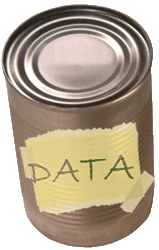Course Summary
A summary of information in this course:
Lesson 1 Simulation Basic Concepts
CHPS focal points can gather data and develop simulations to provide a safe learning environment in which forecasters can:
- Explore the system without causing any harm to the system or operational datasets
- Improve forecasting skills
- Improve user knowledge of CHPS software functionality
The OC serves as the source for simulation data and forecasters perform simulation-based training on the SA.
Focal points have three options for creating and importing data into CHPS to run simulations, the Archive Module, the Archive Display , and the Non-Archive Method.
Note: All of the options utilize CHPS, but some may not be available at your RFC.
Focal point roles vary by office, but at a minimum should...
- Maintain the configuration of archive workflows and archived output (zip files) on the OC.
- Maintain canned data sets and archived files used for simulation input data.
- Maintain a SA configured specifically for simulation training.
- Administer flood event simulation forecast training to the RFC forecast staff.
- Act as the in-house support lead for simulation training and configuration.
Lesson 2 Using the Archive Module
Remember, a module is an activity or operations done in CHPS. One of the modules, the Archive Module, performs archiving activities.
The Archive Module uses the OC to create an archive file automatically at a user-defined time and the SA to import and view the contents of the archive file.
Configure the Archive Module the same as any other module.
Run the simulation using the following procedure:
- Copy the archive files into the SA import archive directory.
- Start the SA.
- View the results of the imported archive file using the Forecast Management Display.
- Select a forecast and navigate through the appropriate forecast groups.
Lesson 3 Using the Archive Display
The Archive Server needed to create the zip files used in the Archive Display is not currently functional.
Archive files (stored as zip files on the local file system) are ingested into an archive database, and stored as metadata. The Archive Display tool links to this database and can perform any of the functionality described above.
The Archive Display tool can only be used when configured as your RFC’s CHPS.
Lesson 4 Using Non-Archive Data

The non-archive method saves observational data from the CHPS OC as data sets in an event folder.
The data is imported into the CHPS SA in stages to mimic a flood event.
A script can save time when copying the contents of each stage into the CHPS import directory. Ask other RFC's if you have a script you can modify.
Bookmark these materials and refer to them as often as necessary. Additionally, please refer to the Deltares Delft-FEWS Configuration Guide.
Congratulations. You reached the end of the course material!
The course material is complete. Please log into the NWS Learning Center to complete the course assessment. You will not receive credit for the course until the NWS Learning Center assessment is completed!

